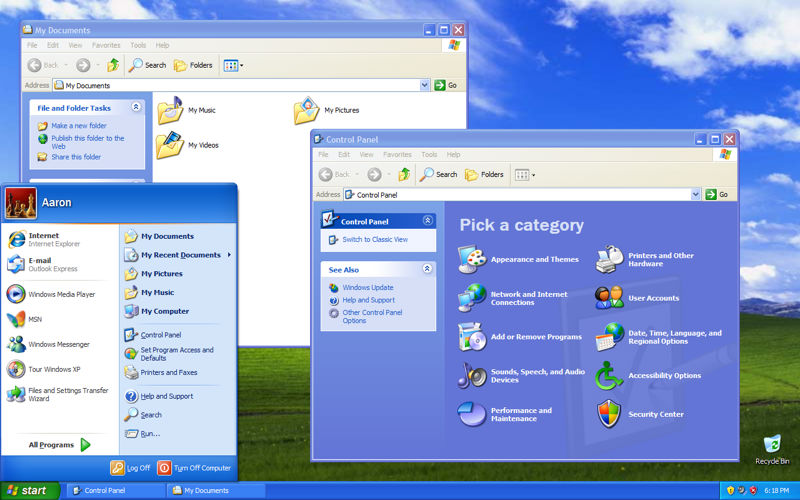

However security was a major concern throughout its lifetime as Internet access became increasingly ubiquitous. Three major service packs were released to help address flaws and the company redirected resources away from any potential successor in order to secure the platform.
Other features added over XP’s lifetime included Windows Media Center and support for tablets – long before Steve Jobs wowed the world with the iPad in 2010.
Despite these problems, Windows XP was a hit, shifting over one billion copies and becoming firmly entrenched in the enterprise, many of which found out to their detriment when support ended last year – 13 years after launch. In fact Windows XP was so popular, 12 percent of all PCs connected to the Internet still use it.
When Vista arrived, it featured the ‘Aero’ GUI, which allowed for transparent window effects, new search and networking capabilities, new applications for email, calendar and photos, a mobility centre for laptops and the ability to use a USB flash drive to boost performance, It even had a sidebar that could mimic Mac OS’s popular widgets.
But, it was expensive and demanded significant hardware requirements. Reports emerged of businesses deliberately downgrading their systems to XP and many firms skipped Vista entirely because of the problems. Still, Vista peaked with a 19 percent market share at the time of Windows 7’s release.
It was well-received in terms of usability, security and speed and is currently present on 61 percent of all PCs connected to the Internet, boosted by the end of support to Windows XP, as businesses finally made the jump to a modern operating system.
It was intended to revive flagging sales in the PC market and allow Microsoft to carve out a share in the growing tablet sector.
But many users felt changes like touch-first Metro apps, cumbersome menus and, gasp, the removal of the Start Menu, were being forced upon them and made the operating system more difficult to use with traditional keyboard and mouse.
Windows RT, built for low power ARM processors used by the majority of smartphones and tablets, couldn’t support legacy apps and was restricted to the slim-picking of the Windows Store. Exacerbating this, was the fact Microsoft decided to launch its own tablet, the Surface, which alienated the manufacturers the company hoped to serve.
Windows 8.1 did much to repair the damage, improving keyboard and mouse support, extending OneDrive integration and re-introducing the Start Button, but not menu, however many enterprises have shied away from the platform, preferring to stick with Windows 7.
On the eve of Windows 10 launch, Windows 8 and 8.1 have a combined 16 percent share of the PC market – just four percent more than XP.
Microsoft’s target of one billion systems seemed ambitious at the time and even more so now, but a free upgrade for Windows 7 and 8 users helped encourage adoption.
The Start Menu returned with more functionality, settings were overhauled to be simpler and Cortana was introduced to PC, helping Microsoft compete with Siri. Metro apps were less intrusive and dare we say useful for desktop but this came at a cost: privacy.
The Wi-Fi sense feature, which automatically shared network credentials with contacts, was scaled back but the aggressive tactics Microsoft employed to encourage people to upgrade have also been criticised.
Still, at least with the free upgrade offer now over, surely this will come to an end… right?
Take our Windows 10 quiz here!
Page: 1 2
After being 'retired' by Intel's board of directors, ex-CEO Pat Gelsinger has joined a VC…
President touts easing Chinese tariffs to facilitate TikTok sale, and also implements 25 percent tariff…
Copyright lawsuit against OpenAI and Microsoft from The New York Times and other newspapers can…
New chapter for famous name from Internet's early days, Napster, has been acquired and will…
Solving not-spots? Ofcom proposal to make UK the first European country to allow ordinary smartphones…
Pioneering robotaxi service from Alphabet's Waymo to go live in Washington DC next year, as…